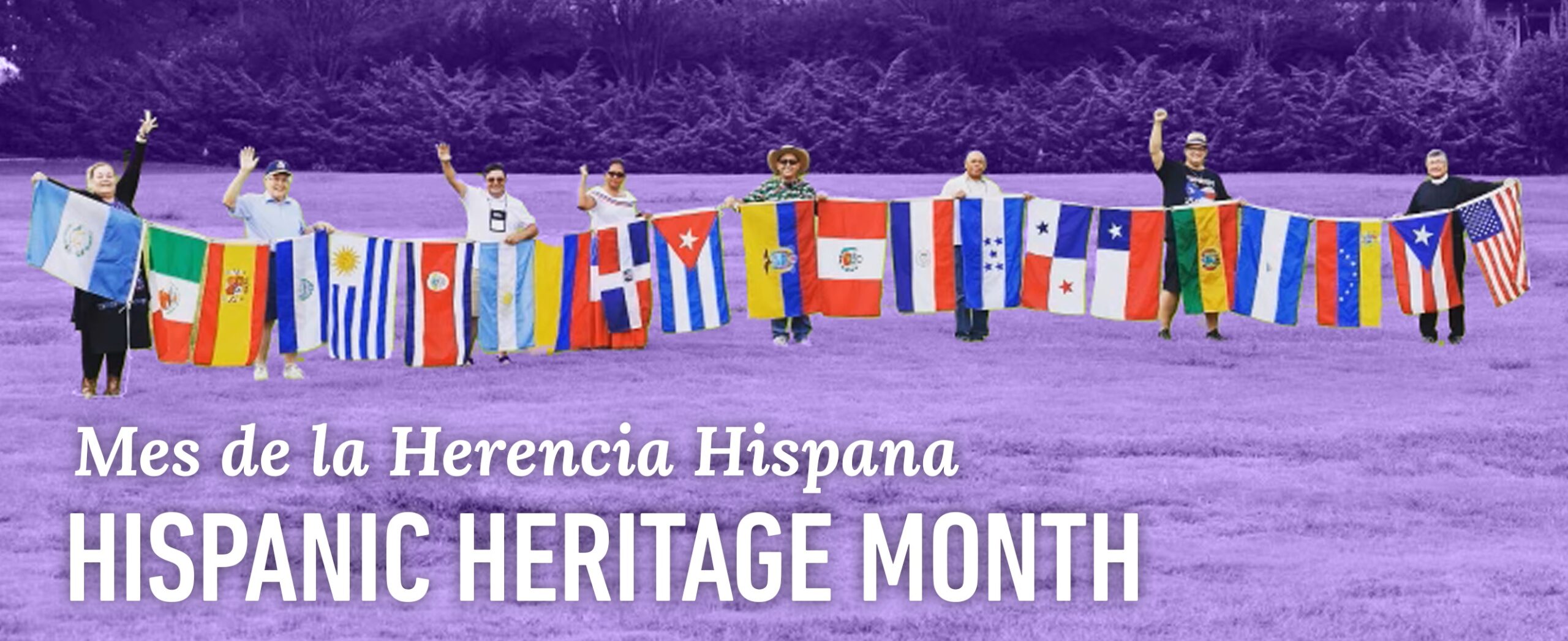
By The Rev. Irma (Mimi) Guerra
It is a month full of opportunity to highlight those unique experiences that we as Hispanics/Latino Americans have experienced, an opportunity to recognize our history, our path and our achievements. Through these celebrations, we can help inspire the next generations to extend the heritage that makes us unique.
Hispanic Heritage Month is a month that begins in mid-September and ends in mid-October. This time period is significant because many Central American countries celebrate their independence between these dates, beginning on September 15 with Costa Rica, El Salvador, Guatemala, Honduras and Nicaragua.
By framing Hispanic Heritage Month within these celebrations of independence, we pay tribute and remember our land, our gastronomy, our dances, our songs, everything that makes us unique, everything that we bring from our ancestors and that makes us participants in that great culture that we have inherited.
As a Mexican, I can highlight something that I will never forget, and they are those conversations with my grandfather who told detail by detail how he hid my grandmother when the revolutionaries passed by the house, a house made of adobe, a palm house, a house made with his own hands, but more than anything it was a house full of love, flavor, wisdom, things that have made us who we are today and that we carry in our hearts, and that is our richness.
Just as the United States celebrates independence on the 4th of July, Latin American countries also pay tribute to their independence which since the era of revolution began with the American Revolution in the 1770s, and by 1836, all Latin American countries —except Puerto Rico and Cuba—had obtained their independence.
THERE ARE 21 HISPANIC COUNTRIES
- Mexico (122 million native speakers)
- Colombia (48 million native speakers)
- Spain (47 million native speakers)
- Argentina (43 million native speakers)
- Venezuela (33 million native speakers)
- Peru (30 million native speakers)
- Chile (17 million native speakers)
- Guatemala (15 million native speakers)
- Ecuador (14 million native speakers)
- Cuba (11 million native speakers)
- Bolivia (10 million native speakers)
- Dominican Republic (10 million native speakers)
- Honduras (8 million native speakers)
- El Salvador (7 million native speakers)
- Paraguay (6 million native speakers)
- Nicaragua (6 million native speakers)
- Costa Rica (5 million native speakers)
- Puerto Rico (4 million native speakers)
- Panama (3 million native speakers)
My heart is filled with gratitude for this country for allowing us to share our richness of culture with you.
EL MES DE LA HERENCIA HISPANA
Es un mes lleno de oportunidad para resaltar esas vivencias únicas que como hispanos/latinos estadounidenses hemos experimentado, oportunidad para reconocer nuestra historia, nuestro camino y nuestros logros. Mediante estas celebraciones, podemos ayudar a inspirar a las próximas generaciones para que extiendan esa herencia que nos hace únicos.
El Mes de la Herencia Hispana es un mes que comienza a mitad de septiembre y termina a mediados de octubre. Este período de tiempo es significativo porque muchos países de América Central celebran su independencia entre estas fechas, comenzando el 15 de septiembre con Costa Rica, El Salvador, Guatemala, Honduras y Nicaragua.
Al enmarcar el Mes de la Herencia Hispana dentro de estas celebraciones de la independencia, rendimos homenaje y recordamos nuestra tierra, nuestra gastronomía, nuestros bailes, nuestros cantos, todo aquello que nos hace grandes, todo aquello que traemos desde nuestros antepasados y que nos hace partícipes de esa gran cultura que hemos heredado.
Como mexicana puedo remarcar algo que jamás olvidare, y son aquellas platicas de mi abuelo que relataba detalle a detalle como escondía a mi abuelita cuando los revolucionarios pasaban por la casa, una casa hecha de adobo, una casa de palma, una casa hecha con sus propias manos, pero mas que nada era una casa llena de amor, de sabor, de sabiduría, de cosas que nos han hecho quienes somos hoy y que llevamos en nuestros corazones, y esa es nuestra riqueza.
Al igual que en Estados Unidos se celebra la independencia el 4 de julio, los países latinoamericanos también hacen homenaje a su independencia que desde la era de la revolución comenzó con la Revolución estadounidense en la década de 1770, y para 1836, todos los países latinoamericanos —salvo Puerto Rico y Cuba— habían obtenido su independencia.
21 PAISES HISPANOS
- México (122 millones de hablantes nativos)
- Colombia (48 millones de hablantes nativos)
- España (47 millones de hablantes nativos)
- Argentina (43 millones de hablantes nativos)
- Venezuela (33 millones de hablantes nativos)
- Perú (30 millones de hablantes nativos)
- Chile (17 millones de hablantes nativos)
- Guatemala (15 millones de hablantes nativos)
- Ecuador (14 millones de hablantes nativos)
- Cuba (11 millones de hablantes nativos)
- Bolivia (10 millones de hablantes nativos)
- República Dominicana (10 millones de hablantes nativos)
- Honduras (8 millones de hablantes nativos)
- El Salvador (7 millones de hablantes nativos)
- Paraguay (6 millones de hablantes nativos)
- Nicaragua (6 millones de hablantes nativos)
- Costa Rica (5 millones de hablantes nativos)
- Puerto Rico (4 millones de hablantes nativos)
- Panamá (3 millones de hablantes nativos)
- Uruguay (3 millones de hablantes nativos)
- Guinea Ecuatorial (1 millón de hablantes nativos)
Mi corazón se llena de gratitud por este país por permitirnos compartir nuestra riqueza cultural con ustedes.
